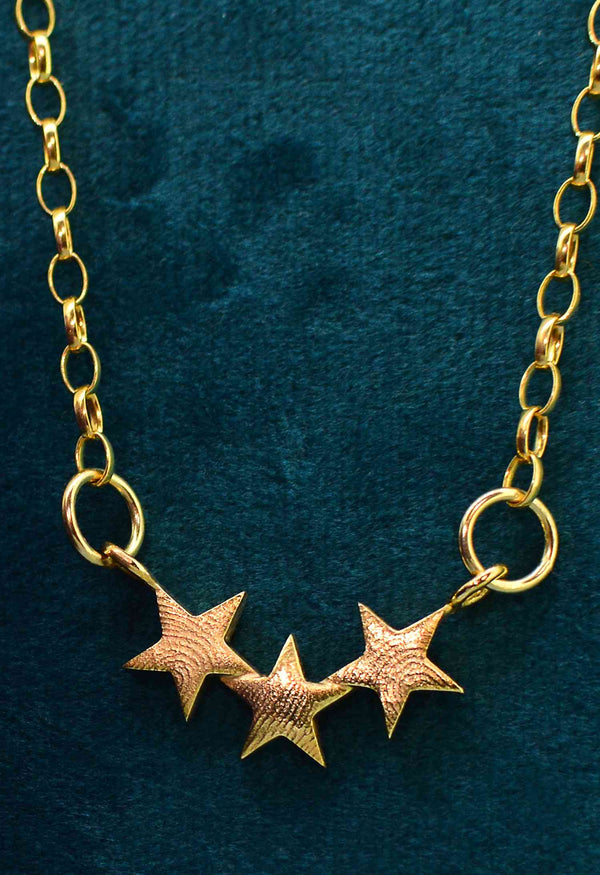Your Cart is Empty
With you for the Journey - Personalised jewellery to treasure forever
Fully Booked and Closed for Christmas 2023
Menu
-
- Dainty Fingerprints
- Small Fingerprints
- Petite Fingerprints
- Large Fingerprints
- Fingerprint Rings
- Engraved Fingerprints
- Other Jewellery and Gifts
- Dainty Fingerprint Necklaces
- Small Fingerprint Necklaces
- Petite Fingerprint Necklaces
- Large Fingerprint Necklaces
- Fingerprint Earrings
- Engraved Fingerprints and Thumbprints
- Special Commissions
- Fingerprint Charm Beads
- Fingerprint Cufflinks and Dog Tags
- Unique Personalised Gifts
- Chains and Bracelets
- Impression Kits
- Gift vouchers
-
- Ashes & Memorial Jewellery
- Design Service
- Diamonds & Gemstones
- Engraving
- Contact Us
- 01440 510 050
- Login

With you for the Journey - Personalised jewellery to treasure forever
Fully Booked and Closed for Christmas 2023

Adding Diamonds to Custom Jewelry and Rings - Helpful Carat size chart
October 22, 2020 6 min read
Brilliant Cut diamonds and Gemstones
A Little History
Diamonds and gemstones are cut from natural stone into a wide variety of shapes.
These include Brilliant (round), Oval, Heart, Emerald, Pear, Princess, Marquise, Radiant and Asscher.
At Sophia Alexander, most of the diamonds and gemstones we set are Brilliant in shape, but if you would prefer something a little different, just get in touch.
Brilliant round diamonds have been around for just over 100 years. They were originally developed by a Belgian engineer called Marcel Tolkowsky who came from a family of diamond cutters.
He worked out that to allow light to reflect maximum brilliance within a diamond, it had to be cut to have 58 specific facets.
When compared with all other diamond shapes, the perfect facets of the Brilliant cut diamond provided the greatest sparkle.
Today, up to 75% of all diamonds sold for jewellery are Round Brilliant in shape, making it by far the most popular shape and Marcel Tolkowsky has become known as the Father of all contemporary Brilliant cut diamonds.
So, how do you know what you’re buying?
If you know anything at all about diamonds, you might be familiar with The 4 C’s of Diamond Quality, a system used since the 1940’s to classify diamonds.
The 4 C’s include:
- Cut grade – The way in which the diamond cutter has cut the stone from the original raw stone.
- Clarity grade – How many blemishes or inclusions are present in the diamond (blemishes are found on the outside of the diamond. Inclusions are seen inside).
- Colour Grade – The natural colour of diamonds, ranging from totally colourless stones (which are incredibly rare), through to shades of yellow / pale brown.
Of course, you may have seen coloured diamonds in almost every colour of the rainbow which are now increasingly popular, but these aren’t graded in the same way. - Carat Grade – The weight of the diamond, which is unhelpfully measured in metric carats.
One carat is equal to a fifth of one gram, but I’ve added a table of sizes below which makes carat weight a lot easier to understand.
Understanding Diamond Cut
Slightly confusingly, the cut of a diamond doesn’t refer to its physical shape (round, princess, pear etc), instead, it refers to the way in which a diamond is cut and shaped.
A lot of the time, this depends on what the diamond cutter had to work with in the first place – remember that natural diamonds come from the earth and were formed millions of years ago. They are all slightly different, so the cut is often determined the original stone.
The cut of a diamond is incredibly important as the cut effects how much light the diamond is able to reflect. This determines how sparkly the diamond is – and we all love a bit of sparkle.
Grading Diamond Cuts is complicated - it’s worked out using precise measurements of the diamond’s crown (the top bit), the girdle (the central section) and the pavilion (the pointed bottom section) and the relationships between these.
It takes into account the table ratio, the length of the facets and girdle thickness (well, that’s enough to make your head hurt).
Luckily, to make things a little easier for consumers (who are neither expert mathematicians nor gem cutters) diamond are clearly graded from 1 – 10 according to how they’ve been cut.
A perfect ideal diamond is graded 0, an Excellent diamond is graded 1, a Very Good diamond is graded 2, a good diamond is graded 3-4, a Fair diamond is graded 5-7 and a Poor Diamond is graded 8-10.
Understanding Diamond Clarity
Simply put, diamond clarity is the number of imperfections present in a single diamond.
Some of these imperfections are totally invisible to the naked eye and can only be seen when carefully inspected under a microscope, whereas some are very visible.
Sometimes, these inclusions can be desirable. A good example of this is the increasingly sort-after Salt and Pepper diamonds where the imperfect black and white inclusions give each diamond a totally unique look.
Sometimes. Inclusions can effect the strength of the diamond, but in most cases, a few inclusions can give character, appearing as flecks, clouds or smoke.
Today, to make it easier to understand what you’re buying, diamonds are inspected and graded by gemologists. They are then put into 5 categories according to their Clarity.
- F / IF – Flawless and Internally flawless with no visible inclusions or blemishes inside and only very minor surface marks that can only be seen when magnified.
- VVS1 / VVS2 – Very slightly included. Inclusions and blemishes that can only be seen when magnified.
- VS1 / VS2 – Slightly included. Inclusions are slightly more visible under magnification.
- SI1 / SI2 – Still only slightly included, but the inclusions are larger. Most are seen when magnifies, but some may also be seen by eye.
- I1 / i2 / i3 – Very obvious inclusions that can be seen without magnification, such as those seen in Salt & Pepper Diamonds.
Understanding Diamond Colour Grades
Colour fortunately is the one part of the 4 C’s that is straight forward.
Diamonds are graded from D – Z using a kind of colour chart that goes from totally colourless (D grade) through to pale yellow (Z grade).
The deeper the yellow colour, the lower the grade and the more affordable the stone.
Conversely, the less colour the diamond has – the higher it’s grade and the higher the price tag.
- D, E and F – On the colour scale, diamonds assigned with these letters are considered colourless, with D being the most colourless, the rarest and the most expensive.
On the 0-10 scale, these are D(0), E(0.5) and F(1.5). - G and H – On the colour scale, diamonds assigned with these letters are almost colourless. The faint yellow hue isn’t really visible to the eye but can be seen when magnified.
On the 0-10 scale, these are G(1.5) and H(2). - I and J – On the colour scale, diamonds assigned with these letters have a faint yellow tint, but can still be described as nearly colourless.
On the 0-10 scale, these are I(2.5) and J(3). - K, L and M – On the colour scale, diamonds assigned with these letters have a more noticeable yellow tint, but this colour is still not hugely noticeable to the untrained eye.
On the 0-10 scale, these are K(3.5), L(4) and M(4.5). - N, O, P, Q and R – On the colour scale, diamonds assigned with these letters are very a light yellow colour which can be more readily seen.
On the 0-10 scale, these are N(5), O(5.5), P(6), Q(6.5) and R(7). - S, T, U, V, W and X – On the colour scale, diamonds assigned with these letters are known as light yellow. This colour is not quite obvious before the diamond is set (it becomes more difficult to see if set in a yellow gold piece of jewellery).
On the 0-10 scale, these are S(7.5), T(8), U(8.5), V(9), W(9.5) and X(10). - Anything after Z has a much more vibrant yellow colour and is known as Fancy.
Fancy diamonds simply have a colour intensity that is greater than the standard 0-10 colour range. It can include yellow and brown diamonds, but it can also include diamonds in just about every colour of the rainbow, including red, blue, green and the hugely popular pink.
So………………. How to choose a diamond
When you choose a diamond or a piece of jewellery containing a diamond, it should be certified by the GIA and come with paperwork detailing the 4C’s for the stone.
If there is no paperwork, you should at least be able to ask the jewellery shop or designer-maker.
You can also request prices for stones using this information.
At Sophia Alexander, we add basic 2.5mm stones to the majority of our pieces of jewellery, however, we are more than happy to source different gemstones and diamonds if required.
Our standard 2.5mm diamonds are
Brilliant shape.
Clarity S/1
Colour White
Carat Weight 0.06ct.
How Big is my Carat Diamond?
Carat weights are notoriously hard to understand. Afterall, how big is a 1ct diamond exactly? This will of course depend a lot on the shape you have chosen, but as round brilliant diamonds are still by far the most popular shape (and they’re also the shape I use as standard in the jewellery I make), I thought it would be helpful to put together a guide.
So, here’s a handy list of Brilliant Cut Diamond Diameters (the measurement straight across the top in metric mm) and corresponding carat weights.
Important side note: This is an approximate guide. All natural diamonds are slightly different. A 5mm diamond will on average weigh approximately 0.5cts, BUT, it might be lighter if it is a shallow stone, or heavier if particularly deep.

Clarity - And what you should buy
A final note, as a general rule, FI – VVS1 Diamonds are very expensive and they're not "off the shelf" items. They can sometimes take a while to source.
As a general rule, a SI 1 / 2 diamond is absolutely find for most discerning buyers who want to add a diamond birthstone or a little extra special sparkle to a piece of custom jewellery.
Although imperfections are present, they're not visible without a microscope so are very good value.
If however, you would like something a little larger or with higher clarity, get in touch and we'll do our best to find the perfect diamond for you.
Leave a comment
Comments will be approved before showing up.
Subscribe
Sign up to get the latest on sales, new releases and more …

Join the Club
WE'RE SO PLEASED TO SEE YOU!
Stay a while and look around.
While you're here, why not subscribe to our newsletter?We'll give you £20 off your first order, VIP access to new products, and access to our very special sample sales.We promise not to annoy you (honest).